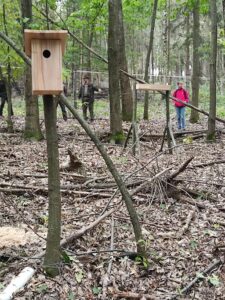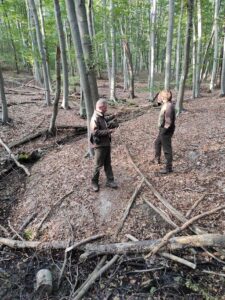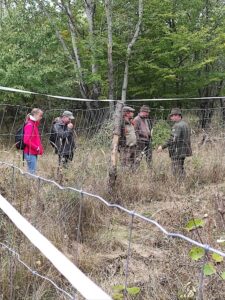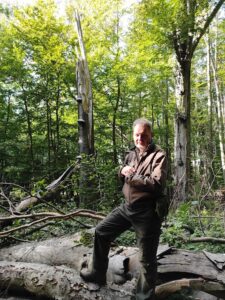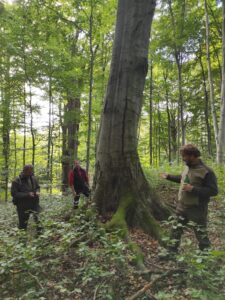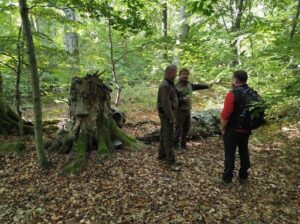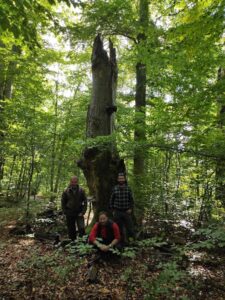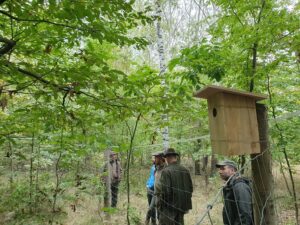Organized by WWF Hungary, private forest owners participating in the CLIMAFORCEELIFE project met in Zemplén on October 10-11, 2023. This time, Péter Laczkó and István Haluska presented the already implemented climate adaptation interventions, and plans which they prepared for their forest areas included in the project.
On the first day of the meeting, the participants visited Péter Laczkó’s forests in the vicinity of Füzér, where they were showcased the wood use interventions implemented last year. The main goal of these interventions, in addition to gain income, is to transform the structure of the forest in order to become more diverse. During the planning, the forest owner paid special attention to the preservation of admixed tree species, and to spare the second canopy level in order to safeguard the forest climate more efficiently. In Péter Laczkó’s forests there are numerous ditches and permanent and periodic watercourses. With the help of small, leaky dams made by hand in the framework of the project, not only can further soil destruction be prevented and reduced, but by slowing down the runoff, the water retention capacity of the forest can also be improved. Thus, the forest will be more resistant during periods of drought, and the cool, humid climate is maintained longer.
The meeting continued on the second day in István Haluska’s forests near Erdőhorváti. The first forest area is located in the immediate vicinity of a land managed as pasture and hayfield. The naturally afforested part of the forest mainly consists of aspen, goat willow, common birch and hornbeam tree species. The forest owner partly fenced this area to help native tree species – e.g. sessile oak and other hard-leaved tree species – to expand. He placed acorn trays for jays in the area to help the oak spread. His goal is to create a diverse forest structure where, in addition to continuous forest cover, it is possible to manage the forest stand of good resilience. In the second forest area we visited, we saw a spruce and red oak plantation that had been created earlier. The dying spruces will be replaced by red oak. Here, too, Mr. Haluska helps the spread of native tree species by opening and fencing canopy gaps, and placing jay trays, where native oak acorns will be put out. He also installed nesting boxes in both forest areas in order to increase the diversity of the area’s habitat and thus its wildlife.


